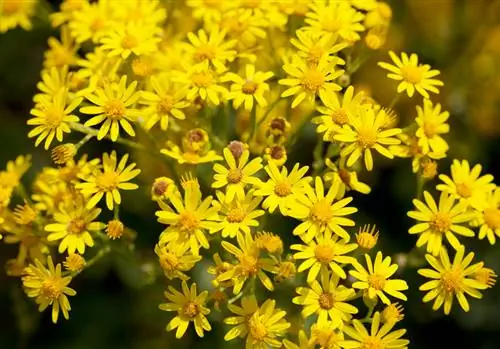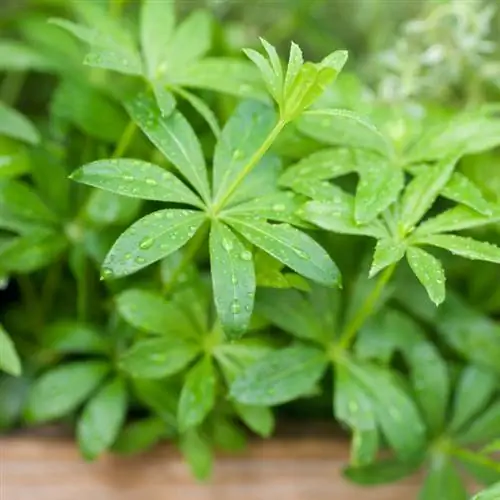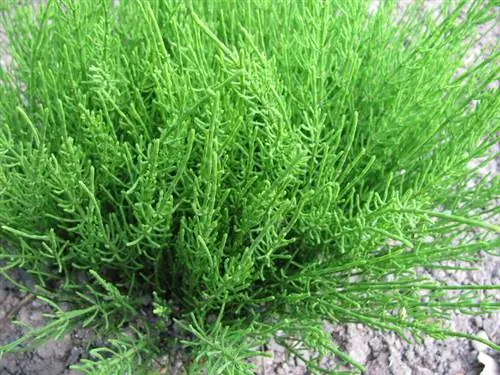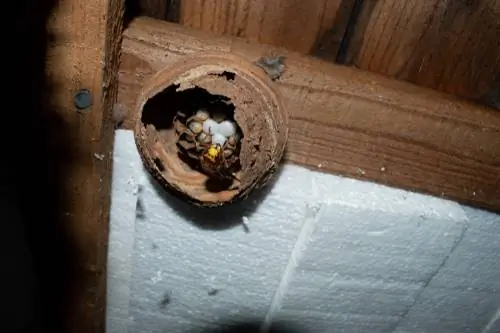- Author admin [email protected].
- Public 2023-12-16 16:46.
- Last modified 2025-01-23 11:20.
Germany is home to around 30 different species of ragwort - which is sometimes also referred to as groundsel. The plant genus occurs worldwide and contains around 1,000 different species, all of which are more or less poisonous. In our country, the common ragwort, narrow-leaved ragwort and common ragwort are particularly widespread.

How do you recognize ragwort?
You can recognize Jacob's ragwort by its 30 to 120 cm high stems, bright yellow flower heads with 13 ray florets and narrow, lanceolate, pinnate leaves that sit on the stem. The flowering period is from June to October.
ragwort is poisonous even when dried
All ragwort species contain highly toxic pyrrolizidine alkaloids, which can cause irreversible liver damage and thus death in both humans and animals. The plants are usually quickly recognized because of their bitter, unpleasant taste, although this disappears when dried - in contrast to the toxins, which remain fully effective even in dried ragwort. Unfortunately, dried ragwort is very difficult to distinguish from other hay components.
Identifying features of Jacob's ragwort
The dangerous Jacob's ragwort grows between 30 and 120 centimeters high. The bright yellow flower heads have exactly 13 ray florets. The flowers are arranged in upright umbels. The few leaves are located directly on the stem and are narrowly lanceolate and pinnate. They are vaguely reminiscent of rocket leaves, but are significantly smaller and darker. Occasionally these leaves can also be confused with chamomile leaves. Young plants do not yet have pinnate leaves; instead, they are bookended and arranged in rosettes. The flowers can be seen between June and October.
Distinguish between ragwort and St. John's wort
St. John's wort and St. James' ragwort appear quite similar at first glance and are therefore often confused. In contrast to the poisonous plant, St. John's wort has a flower with exactly five petals and up to 100 very long stamens. The oval-ovoid leaves appear punctured due to the numerous oil glands. In addition, the two-edged stem is not hollow, but filled with a soft pith. St. John's wort blooms from June to August.
Identifying Common Ragwort
The common ragwort has a completely different appearance than the ragwort: the plant is only between 10 and 30 centimeters high and has more or less hairless, pinnate to pinnate leaves. In addition, the striking ray florets are missing; instead, the baskets are framed by usually ten very short bracts. All other ragwort species have at least short or rolled-back, but usually well-developed ray flowers. Also striking is the fruit cluster, which is reminiscent of a dandelion, with the numerous white umbrella flies.
Tip
In the past, common groundsel was used to stop bleeding in folk medicine. However, this is not recommended today due to the plant's toxicity.






